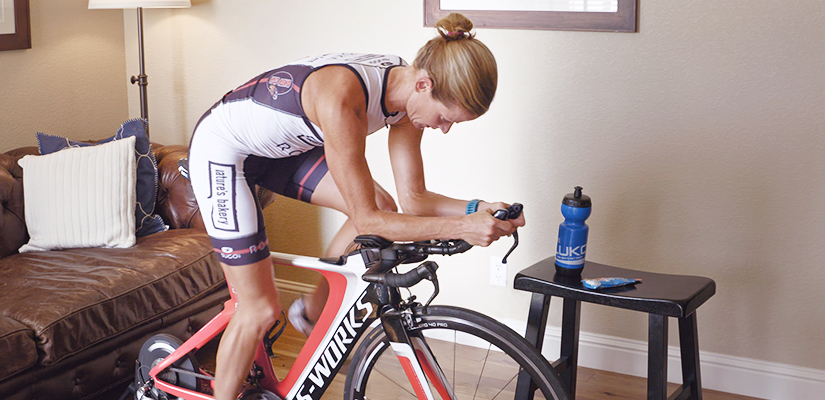
Completing your first triathlon is an exciting and rewarding goal. While it might seem intimidating at first, triathlon training is actually very accessible, even for beginners. With the right approach, clear structure, and gradual progression, anyone can swim, bike, and run their way across the finish line confidently and safely.
Whether your goal is simply to finish or achieve a certain time, here's how to effectively train for your first triathlon step by step.
Step 1: Choose Your Distance
As a beginner, pick a short-distance triathlon to build confidence and experience:
- Sprint Triathlon: 750m swim, 20km bike, 5km run
- Olympic Triathlon: 1.5km swim, 40km bike, 10km run (slightly more challenging)
The sprint distance is perfect for complete beginners, while Olympic distances suit those with some endurance background.
Step 2: Gather Your Basic Gear
You don't need fancy gear to start, but you do need essentials:
- Swim: Swimsuit or triathlon suit, goggles, swim cap
- Bike: Road bike (or even hybrid bike for your first race), helmet, cycling shorts, water bottle
- Run: Comfortable running shoes, athletic clothing, running cap or sunglasses
Invest in better gear gradually as your training progresses.
Step 3: Set a Realistic Timeline
Give yourself at least 8–12 weeks of consistent training:
- 8 weeks for sprint distances if you have a basic fitness foundation
- 12 weeks if you're starting from scratch or opting for an Olympic distance
Consistency matters far more than intensity, especially for beginners.
Step 4: Follow a Structured Beginner’s Plan
Balance your weekly training to include swimming, cycling, running, and rest:
Sample Beginner Sprint Triathlon Weekly Schedule:
Monday: Swim (20–30 mins, drills and easy pace)
Tuesday: Bike (30–45 mins, moderate pace)
Wednesday: Run/Walk intervals (20–30 mins, comfortable pace)
Thursday: Swim (30 mins technique-focused)
Friday: Rest or active recovery (gentle yoga or stretching)
Saturday: Longer bike ride (45–60 mins easy pace)
Sunday: Longer run/walk (30–40 mins easy pace)
Gradually increase duration each week by about 10%.
Step 5: Develop Each Discipline
Swimming Tips:
- Take swim lessons or join a swim group if possible
- Focus on technique first—breathing, stroke efficiency, and kicking
- Swim 2–3 times weekly, mixing drills and steady-state swims
- Practice open-water swims if your triathlon is outdoors
Cycling Tips:
- Include steady-paced rides, some hills for strength, and cadence drills
- Learn basic bike maintenance (flat tire fixes, gear adjustments)
- Practice shifting gears, cornering, and braking safely
Running Tips:
- Begin with run/walk intervals (2 mins run, 1 min walk)
- Slowly increase continuous running time each week
- Keep runs conversational pace—don’t push too hard too soon
- Focus on running form to avoid injury: upright posture, relaxed shoulders
Step 6: Include Brick Workouts
“Bricks” combine two disciplines back-to-back and are crucial for triathlon success. Most common: bike-to-run transitions.
Sample brick workout:
- Bike 30 minutes, immediately followed by 10-minute run
- Aim for 1 brick workout per week during final 4–6 weeks of training
This trains your muscles and mind to handle transitions smoothly.
Step 7: Prioritize Rest and Recovery
Your body adapts during rest days:
- Take at least one complete rest day each week
- Get 7–9 hours of sleep nightly
- Include regular stretching, foam rolling, or yoga sessions
- Listen to your body—rest more if feeling fatigued or sore
Step 8: Nutrition and Hydration
Fuel your training and recovery:
- Eat balanced meals emphasizing lean protein, complex carbs, healthy fats
- Hydrate well daily, especially during longer sessions
- Practice race-day nutrition strategies during training to find what works for you
- Have a pre-race meal plan tested in training (e.g., banana, toast, peanut butter)
Step 9: Race-Day Preparation
Reduce race-day nerves with solid preparation:
- Familiarize yourself with the course
- Practice transitions at home (swim-to-bike, bike-to-run)
- Pack gear the night before (bike, helmet, shoes, goggles, nutrition)
- Arrive early, warm up lightly, and stay calm—focus on finishing, not speed
Final Thoughts
Training for your first triathlon is as much about mindset as physical preparation. Stay patient, consistent, and positive. Remember, your goal is to finish strong and enjoy the experience. With structured training, balanced workouts, and proper recovery, you'll be amazed at what your body can accomplish on race day. Embrace the challenge and savor the journey to becoming a triathlete.